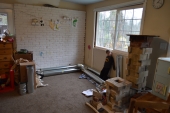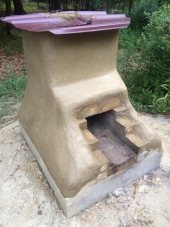
 1
1





 1
1




For all your Montana Masonry Heater parts (also known as) Rocket Mass heater parts.
Visit me at
dragontechrmh.com Once you go brick you will never go back!
 2
2








 1
1




For all your Montana Masonry Heater parts (also known as) Rocket Mass heater parts.
Visit me at
dragontechrmh.com Once you go brick you will never go back!
 1
1








William Bronson wrote:Nice RMH!
I have no advice on the tile that hasn't been offered.
If I were to do a cob covered barrel, I think I would want a layer of something flexible between the barrel and the cob.
Sincerely,
Ralph
 3
3




Phil Stevens wrote:The cob cracks because the barrel expands and contracts a lot more than it's able to accommodate.
![Filename: 8148E4D6-D817-40A2-8F88-D9D53A4D319E.jpeg
Description: Here the plaster was still wet but this was once it was fully coated [Thumbnail for 8148E4D6-D817-40A2-8F88-D9D53A4D319E.jpeg]](/t/101651/a/71184/thumb-8148E4D6-D817-40A2-8F88-D9D53A4D319E.jpeg)




Johan Thorbecke wrote:
Alan Mikoleit wrote:Johan, I like how you covered the barrels, what material did you use and how did you get it to stick to the metal? thanks alan
We had a wire mesh that was covered in some sort of terra cotta that we tied around the build before we put on the loam.(loam is the right English word for the clay-like stuff right?)
allen lumley wrote: - Does any one else remember seeing this as an under 10 minute video here or at Donkey **? Big AL !
I haven't seen it here before but I know that the build was documented and put on Youtube:
http://www.youtube.com/watch?feature=player_embedded&v=pfyOSengWTk
http://www.youtube.com/watch?feature=player_embedded&v=JQe1hSwQ6Ac





|
incandescent light gives off an efficient form of heat. You must be THIS smart to ride this ride. Tiny ad:
The new gardening playing cards kickstarter is now live!
https://www.kickstarter.com/projects/paulwheaton/garden-cards
|







